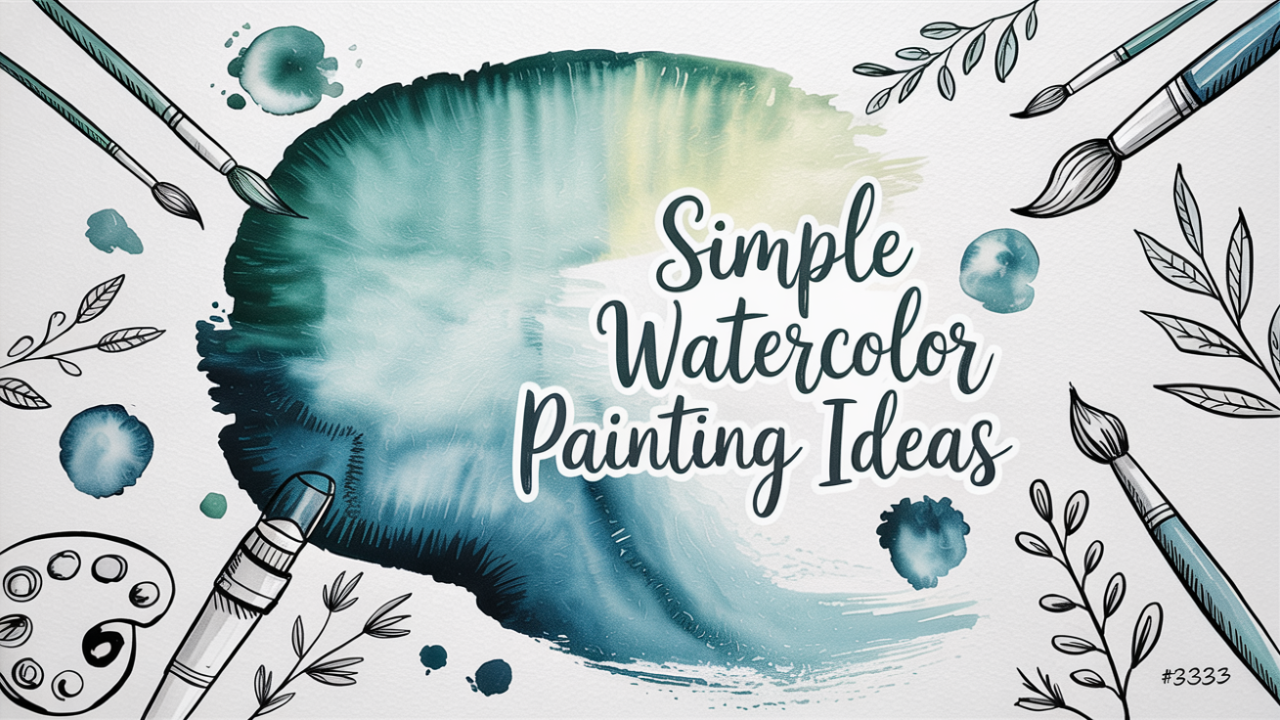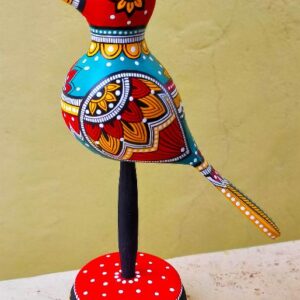
About the Author
Mohd Amaan
Mohd Amaan is an Artist, Writer & Creative Expert at Artisthu. He blends fine art with modern design and storytelling, helping creators present their work beautifully and effectively online.
Table of Contents
ToggleTypes of Indian Folk Art Explained
The types of Indian folk art represent the colorful soul of India — a country where art is not just a form of expression but a way of life. Rooted in culture, tradition, and spirituality, Indian folk art captures the stories, beliefs, and everyday experiences of diverse communities across the nation.
In this article, we’ll explore the different types of Indian folk art, their history, regional styles, and how each form reflects India’s cultural richness.
What Are the Types of Indian Folk Art?
The types of Indian folk art include Madhubani, Warli, Pattachitra, Kalamkari, Gond, Phad, Miniature, and Tanjore paintings, among many others. Each of these art forms comes from different regions of India and carries its own techniques, motifs, and storytelling traditions.
Folk art in India is deeply connected with religion, festivals, and local life. What makes the types of Indian folk art special is that they are not just decorative but also spiritual and functional — often seen on walls, cloth, pottery, and daily household items.
If you’re inspired to become a creator yourself, you can learn step-by-step how to start your artistic journey here: How to Become an Artist.
1. Madhubani Art (Bihar)
One of the most famous types of Indian folk art is Madhubani, also known as Mithila art. Originating from the Mithila region of Bihar, it’s characterized by intricate line work, geometric patterns, and bright natural colors.
Traditionally, women painted Madhubani designs on mud walls during festivals and special occasions like weddings. Over time, this art form transitioned onto paper and canvas, making it globally recognized.
Common themes include Hindu deities such as Krishna, Rama, and Durga, along with elements of nature — fish, birds, and trees — all symbolizing prosperity and harmony.
If you’re interested in understanding the roots of folk painting styles, explore this in-depth article: Indian Folk Art History, Origins & Types.
2. Warli Art (Maharashtra)
Warli is one of the oldest types of Indian folk art, practiced by the Warli tribes of Maharashtra. It’s minimalistic yet highly expressive. The paintings are usually created using white pigment made from rice paste on a mud base.
Warli art is unique because it doesn’t focus on deities but on daily life — farming, hunting, dancing, and festivals. The human figures are drawn in simple geometric shapes: triangles, circles, and lines.
The simplicity of Warli makes it a favorite among modern decorators and designers, proving that traditional art never goes out of style.
3. Pattachitra (Odisha & West Bengal)
The word Pattachitra comes from Patta (cloth) and Chitra (painting). This is one of the most vibrant types of Indian folk art, known for its intricate detailing, mythological narratives, and use of natural colors.
Pattachitra artists paint on cloth, using a mix of chalk and gum to prepare the surface before painting with natural pigments. The themes revolve around Hindu deities, especially Lord Jagannath and Krishna.
This art form stands out for its elaborate borders, floral patterns, and storytelling approach, making every piece a visual narrative of devotion and culture.
4. Kalamkari (Andhra Pradesh)
Kalamkari is one of the most detailed types of Indian folk art, combining art and storytelling on fabric. The name comes from Kalam (pen) and Kari (work). Artists use a bamboo pen to hand-draw mythological tales and intricate floral patterns on cotton or silk fabric.
There are two main styles:
-
Srikalahasti style – hand-drawn with organic dyes.
-
Machilipatnam style – created using block printing.
This ancient art form once adorned temple walls and scrolls and is now seen on sarees, dupattas, and modern home decor items.
5. Gond Art (Madhya Pradesh)
Gond is one of the most expressive and colorful types of Indian folk art practiced by the Gond tribe in Madhya Pradesh. It’s inspired by nature and animals — trees, birds, and fish often become central subjects.
Gond paintings are known for their distinctive use of dots and lines that create texture and movement. The bright color combinations give the artwork a sense of rhythm and life.
Interestingly, Gond artists believe that paintings bring good luck and protect against evil.
If you want to try this style on your own, check out helpful creative guides like Tips for Painting on Canvas.
️ 6. Phad Painting (Rajasthan)
Phad is one of the storytelling types of Indian folk art that originated in Rajasthan. Traditionally, these paintings were done on long cloth scrolls that depicted tales of local deities like Pabuji and Devnarayan.
Priests, known as Bhopas, would narrate these stories while unfolding the scrolls, accompanied by music. The art uses natural colors made from minerals and plants.
Phad art beautifully combines performance and painting, making it a dynamic part of India’s cultural history.
7. Tanjore Painting (Tamil Nadu)
Tanjore painting is one of the most elegant types of Indian folk art, known for its richness and use of gold foil. Originating from Thanjavur (Tanjore), Tamil Nadu, these paintings often depict Hindu gods and goddesses in vibrant colors and embellished jewelry.
The base is made with chalk powder and a binding agent to create a raised effect, and real gold foil is used to highlight ornaments. This makes each piece look royal and divine.
Tanjore paintings are considered auspicious and are often passed down as family heirlooms.
️ 8. Miniature Paintings (Across India)
Miniature paintings are another fascinating category among the types of Indian folk art. These small, detailed artworks flourished under the Mughal Empire and Rajput kingdoms.
Each region developed its own miniature style — Mughal, Rajput, Pahari, and Deccan — each characterized by specific color schemes, brush techniques, and subjects.
They often depict scenes from royal courts, mythology, and nature, serving as historical documents of their time.
9. Saura Art (Odisha)
Saura art, often compared with Warli, is one of the tribal types of Indian folk art practiced by the Saura tribe of Odisha. It has religious significance and is drawn on the walls of homes during festivals and rituals.
Unlike Warli, Saura art has more elongated human figures and symbolic motifs representing fertility, protection, and prosperity.
10. Cheriyal Scroll Painting (Telangana)
Cheriyal scroll painting is a traditional type of Indian folk art from Telangana. It’s a storytelling art form that uses long, vertical scrolls painted with bright natural colors.
The paintings illustrate episodes from Indian epics like the Ramayana and Mahabharata and were used by bards to narrate stories to village audiences.
Cheriyal art beautifully preserves India’s oral storytelling tradition through its vivid visuals.
11. Bhil Art (Rajasthan, Gujarat, Madhya Pradesh)
Bhil art is one of the most ancient types of Indian folk art, created by the Bhil tribe, one of India’s largest indigenous communities. The artwork features vibrant dots and natural motifs, representing their close relationship with nature.
Each dot in Bhil art holds cultural symbolism, creating rhythmic and textured compositions that tell stories of festivals, crops, and tribal life.
️ 12. Alpana & Rangoli (Pan India)
Rangoli (in North India) and Alpana (in Bengal) are among the most recognizable types of Indian folk art. These temporary floor designs are made using rice powder, flowers, or colored sand during festivals.
They symbolize prosperity and welcome guests, blending art, spirituality, and hospitality into one beautiful tradition.
The Cultural Importance of Indian Folk Art
The various types of Indian folk art are not merely decorative — they are visual stories that preserve ancient beliefs, community values, and regional identity.
From tribal villages to modern galleries, these artworks continue to evolve. Many contemporary artists are blending folk techniques with modern themes to make them relevant to today’s audience.
You can explore authentic folk artworks and even find artists who specialize in these traditional styles.
To dive deeper into authentic cultural sources, you can also visit Indian Folk Art & Culture, which highlights India’s living traditions and their global recognition.
Conclusion
The types of Indian folk art are as diverse as India itself — every state, tribe, and village adds its own colors, symbols, and emotions. These art forms are not just heritage pieces but living traditions that continue to inspire artists across the world.
Whether you admire the fine lines of Madhubani, the geometric simplicity of Warli, or the golden glow of Tanjore, each piece tells a timeless story.
So, the next time you see a folk painting, remember — it’s not just art; it’s a glimpse into India’s soul.
If you want to explore, learn, or support artists, visit Indian Folk Art on Artisthu — where creativity finds its true canvas.

Written by: Mohd Amaan












